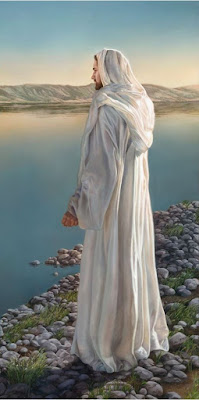Stay focused on Jesus

The post below is adapted from an article by Joseph Tkach. It provides food for thought as we enter the season of Epiphany , which celebrates the revealing of Jesus Christ to the world. [Revised 1/9/17] Given that he is the final and ultimate revelation of who God is (Hebrews 1:3), Jesus must remain our focus throughout the year. Knowing who Jesus is and what he has done for us helps us grow in understanding the reconciliation we have with God and each other. In Christ, through the Holy Spirit, we are set free to love. Let's look at some related concepts. Come Follow Me by Liz Lemon Swindle (used with artist's permission) Jesus' two natures and his vicarious humanity Jesus is both divine and human--- two natures united permanently in one person, through what theologians refer to as the hypostatic union , a term utilized in the early church to apprehend the truth revealed in Scripture that Jesus is the complete, personal sharing of God in humani...



